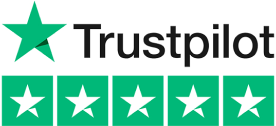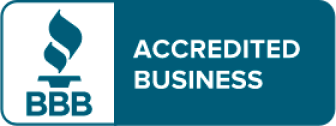-3.png)
How to boost donor response rates
Stewarding your FreeWill legacy donors
As a FreeWill partner, your organization is driving legacy commitments across new and existing supporters. As you reach new audiences for planned giving, you have the opportunity to adopt new stewardship strategies to bring these donors closer to your mission.
FreeWill is here to help you connect with your donors by surfacing donor insights in your Partner Portal. In comparison with traditional planned giving donors, best practices for stewarding FreeWill donors will be unique:
FreeWill donors may have been previous supporters or they may be brand new to your organization’s email list.
- Best practice: Start the relationship on the right foot by introducing yourself and getting to know the donor. Recognize that while not all donors will want to build a personal relationship, you can still honor their gift intention and offer opportunities to learn more about the impact of their commitment.
FreeWill grows your planned giving pipeline to include diverse prospects of all ages to build a foundation of legacy gifts for many years into the future.
- Best practice: While older donors may appreciate the recognition, younger donors may not be as familiar with legacy societies or have time to get deeply involved in your organization. Consider ways to segment donor outreach by giving history or generation.
The FreeWill platform allows donors to notify you of a planned gift in advance, surfacing the opportunity for you to cultivate a lifelong relationship.
- Best practice: Effective stewardship builds donor awareness of your mission and impact over time. Take advantage of the opportunity to share high-level organizational updates with donors through personalized outreach.
We know how exciting it is to learn of a new bequest commitment, but these donors are likely to be different from other legacy donors who may have reached out to your organization proactively. Many donors are busy and even long-term, loyal donors may not respond to emails. According to industry data, only 8.5% of cold email outreach receives a response. Additionally, we know that planned giving is a sensitive topic, and donors may still be finalizing their estate plans with their family members or attorneys.
In our digital fundraising landscape, donors receive dozens, if not hundreds, of emails per day. How can your message break through the noise? Test out the following strategies to capture donors’ attention and take action today:
1. Text donors first
Texting is becoming an increasingly popular way to reach donors. GiveSmart reports that text messages have an open rate of 98%, higher than an average email open rate of 22%. If you have the ability to text donors, send a message to introduce yourself and include a clear CTA to encourage donors to reply, for example: respond yes to let me know I’ve reached the right person!
2. Make it visual
Research shows that donors can process images as fast as 13 milliseconds, or in the blink of an eye. Including a bold header, button, or headshot will help donors read your message faster. We recommend including graphics that illustrate the brand, mission, and impact of your organization.
3. Create a compelling call to action (CTA)
Include a visual call to action (CTA) with a button or highlighted link in all your communications. As an example, add a CTA such as "share my story" to encourage donors to fill out a survey. In our milestone email templates, we recommend calls to action for donors to "reply" with the click of a button.
4. Create a welcome series
Create an email drip campaign to introduce donors to your organization's programs and impact. Welcome series help build relationships with new donors and keep them engaged with your organization. Segment your follow-up based on donor actions, such as opens and clicks.
5. Send a video
Videos provide a more compelling, visual way to tell the story of a donor’s impact. According to Campaign Monitor, including a video in your email can improve click rates by 65%. You may want to use online software to create personalized videos. FreeWill can help provide you with talking points to thank your FreeWill donors.
6. Make it personal
Personalization is critical to boosting response rates. You can use the donor's message to your organization and gift designation to guide your follow-up strategy. Create a “thank you” message that is personalized for the donor from a board member, a community member, or a volunteer. Remember that planned giving is a personal decision, and get creative to ask the donor about their story or connection to your mission.
7. Create engaging subject lines
The best subject lines will increase donor curiosity, convey urgency, and name the donor personally. Create personalized subject lines to increase open rates, such as [NAME], is it you? For any email with an action item, we recommend adding [Action needed] to the subject line. You can also use a free subject line tester to try different strategies.
8. Focus on impact
Many donors will want to hear the impact of their gift, even if it is far into the future. Create a message that is tailored to the donor about how a gift of $10,000 could make a difference. Share about your organization's impact on a high level on a quarterly or annual basis. This strategy will be especially helpful for stewarding Millennial donors.
9. Add social proof
Social proof is the concept that people want to behave in ways that are like their peers. A study from the University of Pennsylvania shows that the most effective form of social proof for charitable giving is telling the story of an individual rather than a group. Consider interviewing a legacy donor to provide a testimonial on why they decided to make a legacy gift to your organization. This story could inspire new legacy donors to get involved with your organization.
10. Get to know your donors
As a fundraiser, you are the expert in getting to know your donor audience. Lean into your skills as a fundraiser to create a solid foundation for your new legacy donors. Before asking about a donor's gift, start by getting to know your donor and their story. Ask questions such as: What impact do you want to make? or What do you care most about? Consider including a link to a donor survey to gather this information.
Boosting donor response rates requires a multifaceted approach, including multiple communication channels. Be persistent in reaching out to donors – you never know when a donor will be ready to take the next step and build a more personal relationship.
We are here to support you as you scale your planned giving and stewardship program. If you have questions about these resources, please reach out to your FreeWill Strategist.




